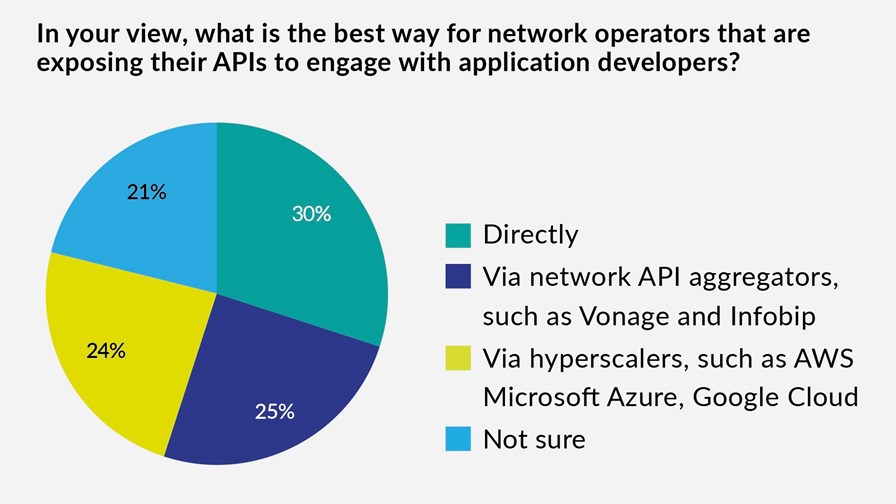
Source: The Network APIs Strategy Report, DSP Leaders
- Network API exposure has become a big deal for telcos
- TelecomTV surveyed the network operator community to get its views on the trend and published a report based on the results
- Our telco respondents are split over the best way to engage with the all-important application developer community
Telcos are desperate to develop new business opportunities by exposing their network functions (via standardised APIs) to the application developer community, but network operators are currently unsure about the best way to engage with those application developers.
That is one of the key takeaways from a recent TelecomTV survey conducted with members from the network operator community, the results of which were used to produce our Network APIs Strategy Report, part of the DSP Leaders report series. All of our reports are editorial-led and available for anyone to download for free.
Over the summer, we conducted an industry survey that sought the views of telcos on one of the hottest topics around right now – the potential impact of network API exposure and the implementation of telco-as-a-platform strategies. We received responses from more than 70 executives, representing 54 different telcos around the world.
We asked our respondents a range of questions, one of which focused on the optimum way for telcos to engage with developers.
There is much debate within the telco community about the best way for telcos to make the most of their network API exposure efforts and maximise their business and engagement opportunities – and it’s clear from our survey responses that the operators believe there will be many opportunities deriving from many network-API-enabled applications: See Network APIs to spawn ‘endless apps’ – report.
For the larger operators eyeing up engagements with the application developers that will integrate their network APIs into new services for enterprises and consumers, it’s easier for a multistrand, go-to-market strategy to be devised and executed, but for many resource-constrained service providers the path is not so clear.
So we asked our telco respondents: In your view, what is the best way for network operators that are exposing their APIs to engage with application developers?
As you can see from the graphic above, the industry is split, with the results amplifying just how much of a dilemma this is for the operators.
The most popular option was for telcos to engage directly with the development community (which would be nice in an ideal world), while 25% of our respondents believe that hooking up with an API aggregator, such as Ericsson’s Vonage or Infobip (something that many operators are doing as part of their strategies) is the best way to reach developers. Just 24% believe the hyperscalers offer the best route to the developer community and a noteworthy 21% of our respondents were not sure of the best option.
Of course, things have moved on in the network APIs sector over the past few weeks, most notably with the announcement that 12 major telcos – América Móvil, AT&T, Bharti Airtel, Deutsche Telekom, Orange, Reliance Jio, Singtel, Telefonica, Telstra, T-Mobile US, Verizon and Vodafone – have joined forces with Ericsson to form a new company that will provide network APIs to a broad ecosystem of developer platforms, including hyperscalers, communications platform-as-a-service (CPaaS) providers, system integrators (SIs) and independent software vendors (ISVs).
The network APIs to be made available by this as yet unnamed company will conform to the specifications developed by Camara, the open-source project driven by the GSMA and the Linux Foundation, which recently provided an update on its developments – see Camara focuses on network APIs progress.
The new joint venture, which appears to cover all the main bases in providing multiple channels to the developer community, looks ideally suited to the large telcos with significant resources (especially as each telco participant is set to take a small equity stake in the venture). But is it suitable for smaller operators? If they can find a way to engage, it looks like an approach that would take a lot of the pain out of a network API marketing strategy.
To find out more about how network operators are thinking about their network API strategies and prospects, download the Network APIs Strategy Report now and keep an eye on our dedicated APIs content channel for the latest industry developments.
- Ray Le Maistre, Editorial Director, TelecomTV
Email Newsletters
Sign up to receive TelecomTV's top news and videos, plus exclusive subscriber-only content direct to your inbox.




